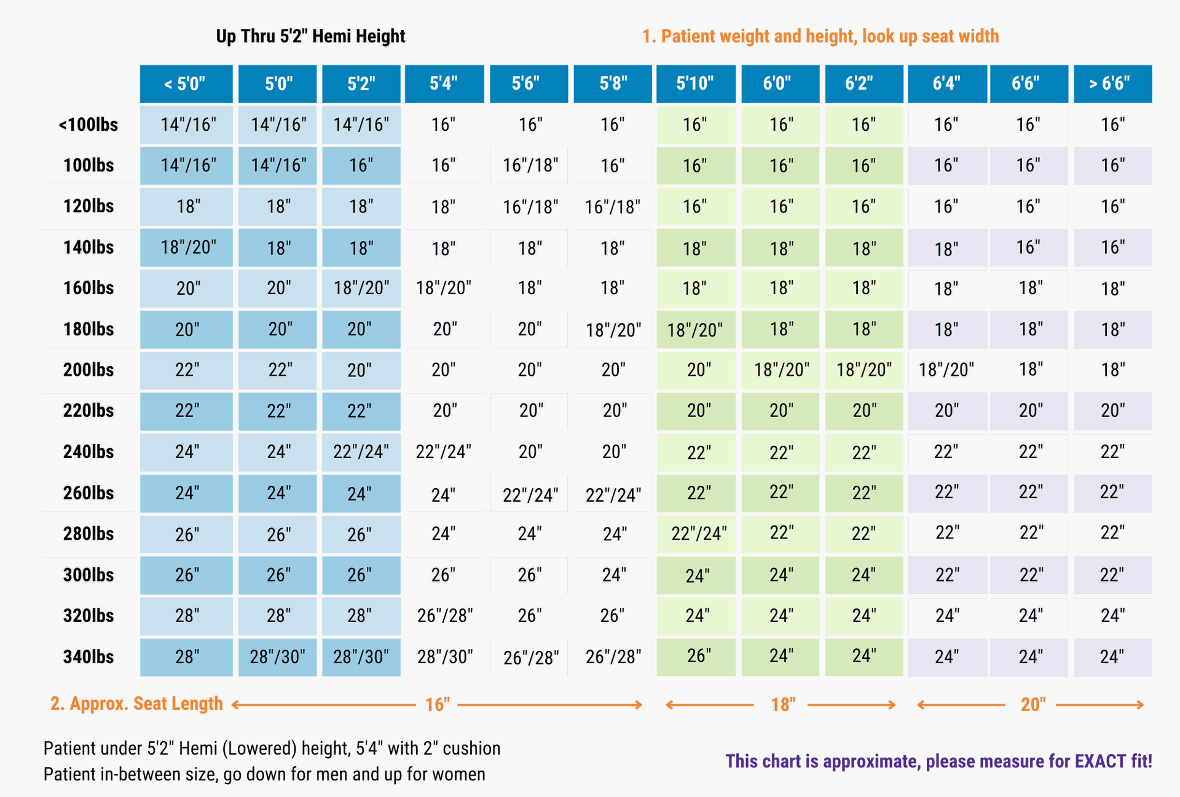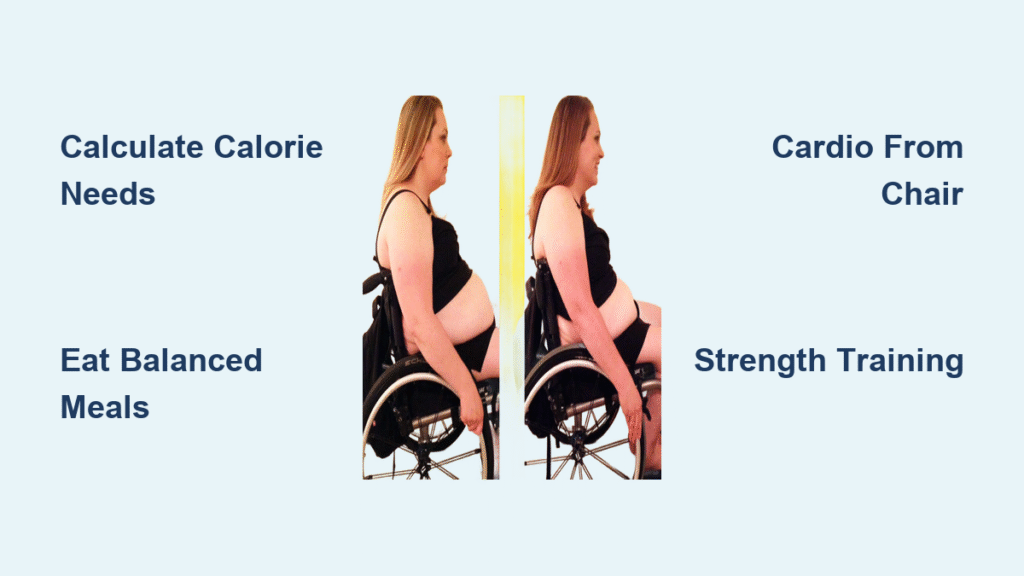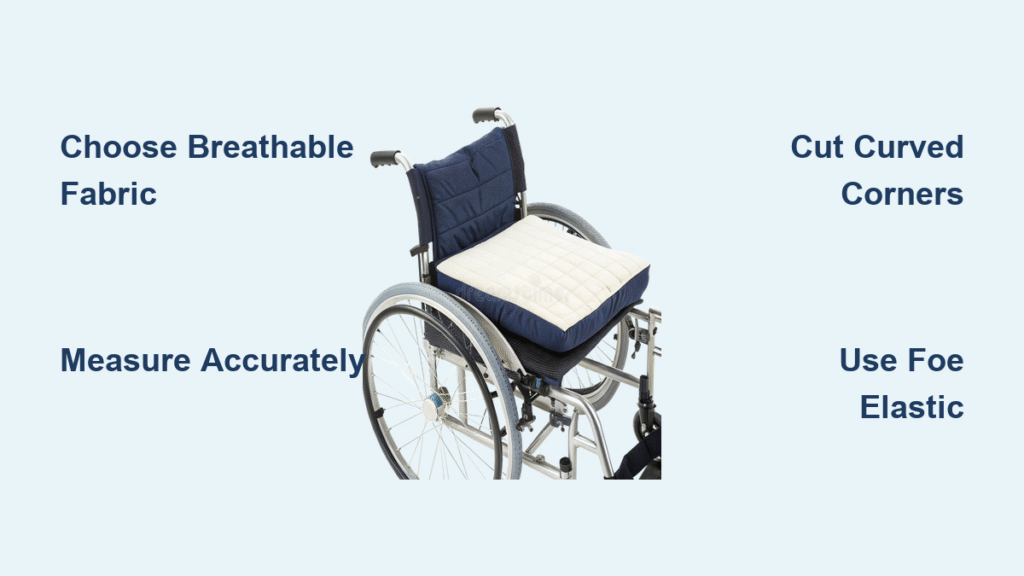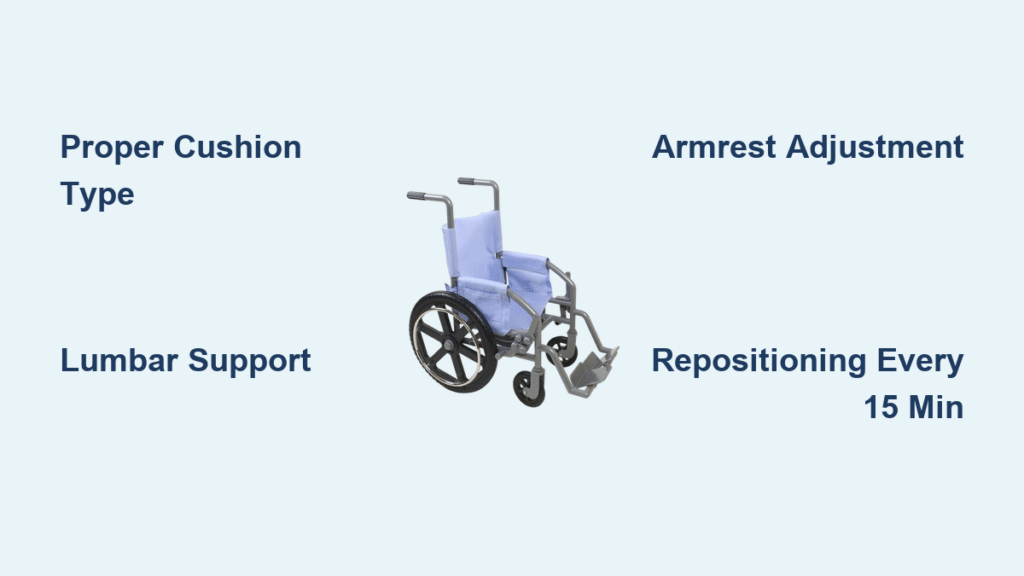If you use a wheelchair daily, you’ve likely noticed weight gain happens faster and weight loss feels harder than for able-bodied people. Your metabolism runs 30-40% slower due to inactive leg muscles—the body’s largest calorie-burning tissue—yet most fitness advice completely ignores your reality. Standard calorie guidelines fail you, traditional cardio options don’t work, and finding reliable information feels impossible. This isn’t your fault—it’s because 95% of weight loss content targets people who can walk.
The good news? Thousands of wheelchair users successfully manage their weight using science-backed strategies specifically designed for their bodies. You don’t need impossible workouts or starvation diets. This guide delivers exactly what you need: precise calorie targets that match your metabolism, exercises you can perform from your chair, and nutrition strategies that work with your lifestyle—not against it. Let’s transform your weight loss journey from frustrating to achievable.
Calculate Your True Caloric Needs

Your body requires dramatically fewer calories than standard guidelines suggest. While most men burn 2,500 calories daily, wheelchair users typically need just 1,500-1,800. This significant reduction occurs because your largest muscle groups—your legs—remain inactive, slashing your resting metabolic rate. For those with severe quadriplegia, daily needs may dip as low as 1,200 calories.
Professional Assessment Methods
Visit your GP first for accurate baseline measurements. Standard BMI calculations fail wheelchair users because they don’t account for muscle atrophy in your lower body. Your doctor can:
- Measure body composition using specialized scales designed for wheelchair users
- Calculate personalized caloric requirements based on your specific injury level
- Screen for medications that might be causing weight retention
- Refer you to dietitians experienced with spinal cord injuries
Self-assessment tools become crucial when professional help isn’t immediately available:
– Use skinfold calipers for body fat measurements
– Track waist circumference above your injury level
– Monitor how your clothing fits as a progress indicator
– Take monthly front and side photos for visual comparison
Warning Signs to Monitor
Stop dieting immediately if you experience these red flags:
– Unintentional weight loss exceeding 2 pounds weekly
– Persistent fatigue that interferes with daily transfers
– Increased muscle spasms or pain during routine activities
– Difficulty performing basic self-care tasks you previously managed
– Signs of nutrient deficiency like brittle nails or excessive hair loss
Master Wheelchair-Friendly Nutrition

Build meals around vegetables and lean proteins to maximize nutrition within your limited calorie budget. Your plate should contain 50% non-starchy vegetables, 25% lean protein, and 25% controlled portions of whole grains or starchy vegetables. This ratio keeps you full while providing essential nutrients.
Sample Daily Meal Framework
Breakfast (300 calories):
– 2 eggs scrambled with spinach and tomatoes
– 1 slice whole grain toast
– Coffee or tea without sugar
Lunch (400 calories):
– Large salad with 4oz grilled chicken
– 2 tablespoons light dressing
– 1 small apple
Dinner (500 calories):
– 5oz baked salmon
– 1 cup roasted vegetables
– ½ cup brown rice
Snacks (300 calories total):
– Greek yogurt with berries
– Raw vegetables with hummus
– Protein shake made with water
Eliminate these calorie bombs that wheelchair users commonly consume:
– Sugary coffee drinks (700-800 calories each)
– Processed snack foods high in sodium
– Fast food meals exceeding daily calorie needs
– Sports drinks marketed as “healthy”
– Large restaurant portions designed for active individuals
Meal Prep for Limited Mobility
Sunday batch cooking transforms healthy eating from impossible to effortless:
– Grill 10 chicken breasts for the week
– Roast large trays of vegetables
– Pre-portion snacks into 100-calorie bags
– Prepare overnight oats in mason jars
– Freeze individual smoothie packs
Adaptive kitchen tools make cooking accessible:
– Lightweight pots with two handles
– Cutting boards with spikes to hold vegetables
– Jar openers and easy-grip utensils
– Microwave steamer bags for vegetables
– Electric can openers for independence
Cardio Exercise From Your Chair
Start with 10-minute sessions three times weekly, building to 20 minutes as endurance improves. Your cardiovascular system adapts quickly when you maintain consistency. Aim for 150 minutes of moderate-intensity aerobic activity weekly—the minimum recommended for health benefits.
Beginner Cardio Options
Wheelchair pushing intervals provide excellent cardio:
– Push hard for 30 seconds
– Coast for 90 seconds
– Repeat 10-15 times
– Monitor heart rate if possible
Adaptive aerobics classes offer structured workouts:
– Search “Sit and Be Fit” videos online
– Join local senior center chair exercise classes
– Follow wheelchair Zumba routines on YouTube
– Use resistance bands while seated
Advanced Cardio Solutions
Hand-cycling burns 400-600 calories hourly:
– Start with 5-minute sessions
– Increase duration by 2 minutes weekly
– Use stationary hand-cycle for convenience
– Track distance and resistance progression
Wheelchair sports combine cardio with social interaction:
– Basketball: 472 calories per hour
– Tennis: 400 calories per hour
– Rugby: 500+ calories per hour
– Find local teams through WheelPower organization
Strength Training From Wheelchair
Target upper body and core muscles to boost metabolism and prevent injury. Strong arms and shoulders make daily transfers easier while burning more calories at rest. Focus on pulling movements to balance the pushing motions from wheelchair use.
Essential Exercises
Bicep curls with hand weights:
– Start with 2-5 pound weights
– Perform 2 sets of 10-12 repetitions
– Increase weight when 12 reps feel easy
– Focus on controlled movements
Overhead presses strengthen shoulders:
– Use light dumbbells or resistance bands
– Press straight up, not forward
– Keep core engaged throughout
– Stop if shoulder pain occurs
Core rotations with medicine ball:
– Hold 2-10 pound ball at chest level
– Rotate torso left and right
– Keep hips stable, move ribs
– Perform 3 sets of 15 rotations
Equipment for Home Workouts
Resistance bands offer versatile strength training:
– Anchor to wheelchair or door frame
– Perform rows, presses, and pulls
– Adjust resistance by band thickness
– Store easily in small spaces
Velcro arm weights provide convenient resistance:
– Attach during daily activities
– Start with ½ pound per arm
– Remove if causing shoulder strain
– Progress gradually to avoid injury
Track Progress Accurately

Monitor multiple indicators since scale weight fluctuates. Wheelchair users often lose inches before pounds due to muscle gains in upper body. Relying solely on the scale creates unnecessary frustration.
Weekly Assessment Routine
Sunday measurements track real progress:
– Upper arm circumference
– Chest measurement above injury
– Waist at narrowest point
– Weekly photo in same clothing
– Energy level rating (1-10 scale)
Food diary essentials:
– Track everything consumed for 2 weeks initially
– Note hunger levels before/after meals
– Identify trigger foods or situations
– Use apps like MyFitnessPal with wheelchair activity settings
When Progress Stalls
Plateau troubleshooting checklist:
– Recalculate calorie needs (metabolism adapts)
– Try intermittent fasting (1pm-8pm eating window)
– Increase exercise intensity or duration
– Check medications for weight gain side effects
– Consider thyroid function testing
Build Your Support System
Success requires more than willpower—environment and support determine long-term results. Surround yourself with people who understand wheelchair-specific challenges.
Professional Resources
Find qualified practitioners through:
– Spinal cord injury rehab centers
– Disabled Sports USA chapters
– Local university adaptive fitness programs
– Medicare-covered dietitian consultations
Community programs offer free or low-cost options:
– YMCA adaptive fitness classes
– Senior center chair exercise programs
– Veterans Affairs adaptive sports programs
– Hospital wellness centers
Online Communities
Virtual support networks provide 24/7 motivation:
– Reddit r/disability fitness communities
– Facebook groups for wheelchair weight loss
– YouTube channels featuring adaptive workouts
– Instagram accounts showcasing wheelchair athletes
Maintain Long-Term Success
Focus on sustainable habits rather than rapid results. Most wheelchair users who maintain weight loss for 5+ years share common strategies.
Lifestyle Integration
Make healthy choices automatic:
– Same breakfast daily to reduce decisions
– Pre-planned healthy snacks always available
– Exercise scheduled like medical appointments
– Social activities centered around active pursuits
– Restaurant orders planned before arriving
Prevent Weight Regain:
– Weigh yourself weekly (same day, same time)
– Adjust calories up by 100 if losing too fast
– Add 50 calories back for every 5 pounds lost
– Track energy levels and strength changes
– Schedule professional reassessment every 6 months
Celebrate non-scale victories:
– Easier transfers and dressing
– Increased endurance for daily activities
– Better blood pressure and cholesterol
– Improved mood and confidence
– Participation in new activities or sports
Your weight loss journey in a wheelchair requires different strategies, not more willpower. Start with a GP consultation this week to establish your true caloric needs. Download a tracking app, measure your current food intake for three days, and schedule your first wheelchair-friendly workout. Small, consistent changes create lasting transformation—your body is ready to respond to the right approach. Within 30 days of implementing these strategies, you’ll notice easier transfers, more energy, and clothing that fits better. The key isn’t working harder—it’s working smarter with methods designed specifically for your body.





